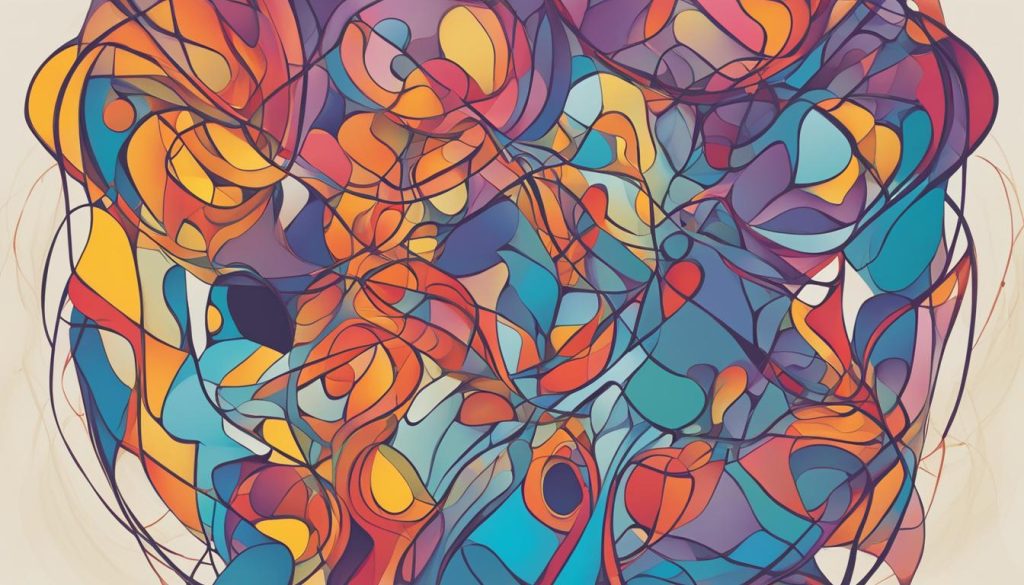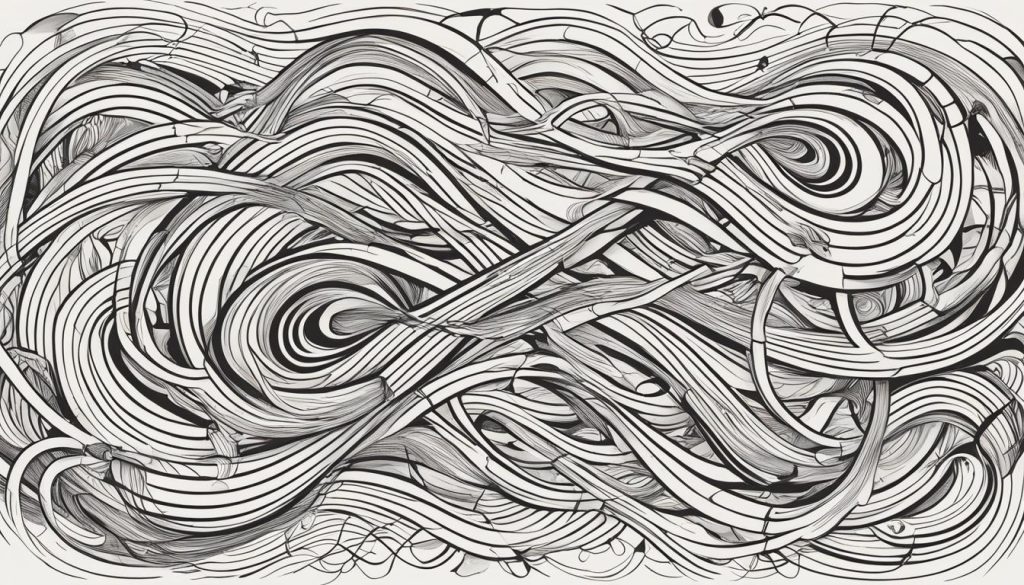Hi there! I’m excited to share with you a personal guide that’s close to my heart – the art of understanding body signals. As someone perpetually fascinated by the subtleties of human interaction, I’ve come to appreciate the profound impact that nonverbal communication has on our daily lives. Whether it’s a business negotiation, a first date, or simply catching up with friends, correctly deciphering body movements can dramatically enhance our interpersonal connections. But why is this silent language so vital, and how can we get better at it? Let’s dive into the silent but expressive world of body signals together and unlock a new dimension of understanding.
I’ve spent years observing and learning from various interactions, from the most fleeting of encounters to the most critical meetings. Through my journey, I’ve come to realize that our bodies often speak volumes more than our words ever could. In this guide, I’ll walk you through the intricacies of body language, provide tips on how to interpret various signals, and offer insights on how to express your own feelings and thoughts more effectively.
Key Takeaways
- The profound role of nonverbal communication in shaping our social interactions.
- Practical insights on deciphering body movements for clarity and understanding.
- Strategies for enhancing interpersonal connections through mindful observation of body language.
- Understanding the importance of context in understanding body signals.
- The power of nonverbal cues in expressing emotions and building rapport.
- Tips to refine your own body language for clearer communication.
The Importance of Nonverbal Communication
As I delve into the depth of human interaction, it’s evident that the role of nonverbal cues in social interactions is pivotal. These silent signals serve as the unspoken dialogue complementing the words we speak. In fact, they play a significant role, offering a layer of understanding that permeates the spoken word, often imprinting lasting impressions and shaping the subtleties of our daily exchanges.
The Role of Nonverbal Cues in Social Interactions
The dance of communication relies heavily on the unsaid. In personal conversations and group settings alike, we continuously emit and interpret nonverbal signals. A handshake, the tilt of the head, and even the distance between conversants are nuanced elements that reveal more than statements ever could. They are the physical cues that cement first impressions and reinforce the bonds of familiarity and trust.
Complementing or Contradicting Verbal Communication
It’s fascinating how a simple gesture can enhance or even counter the meaning of words. I’ve observed how a mismatch between someone’s speech and their body language often indicates incongruence in their message. Such discrepancies are indispensable in understanding the multifaceted layers of personal discourse. This realization beckons a mindful approach to ensure my gestures complement verbal communication rather than cloud its intention.
Cultural Influences on Interpreting Body Language
When treading the global fabric of interactions, I cannot ignore cultural differences that shape our interpretation of the unsaid. A nod in some cultures may affirm agreement, while in others, it’s simply a polite acknowledgment. Recognizing these divergent norms is crucial to avoid misunderstandings that can disrupt the harmony of cross-cultural dialogues. It’s a continuous learning curve, adjusting my lens to decipher nonverbal cues within their rightful context.
Understanding Body Signals

In my pursuit to demystify the intricate language of nonverbal communication, I invite you to delve into the significance of eye contact and interpreting facial expressions. The ability to decode nonverbal cues offers profound emotional insight, enhancing our interactions and fostering deeper connections. Now, let’s explore how these signals serve as powerful conduits for understanding and empathy.
Eye Contact and Its Significance
Eye contact is more than just a social nicety; it is a potent indicator of engagement, trust, and sometimes, concealment. When I engage in body language interpretation, I pay close attention to not just the presence of eye contact but also its quality and duration. Let’s consider the significance of eye contact in different scenarios:
- Positive Rapport: Sustained eye contact suggests interest and attentiveness during conversations.
- Confidence: An unflinching gaze often reflects confidence and assertiveness.
- Intimidation: In some contexts, an intense stare could be perceived as an attempt to dominate or intimidate.
- Deception: Averting gaze or blinking frequently might indicate discomfort or deceit, although such interpretations should be made cautiously.
Facial Expressions and Emotional Insight
Facial expressions are the vivid paintings of our internal emotional landscape. As I tune into these silent signals, I am often able to gain an authentic glimpse into someone’s emotional state. Here’s a look at the emotional insight we can gain from decoding certain expressions:
| Expression | Muscles Involved | Associated Emotion |
|---|---|---|
| Duchenne Smile | Orbicularis oculi and zygomatic major | Genuine happiness |
| Furrowed Brow | Corrugator supercilii | Worry or concentration |
| Tightened Lips | Orbicularis oris | Anger or determination |
The key lies not just in identifying these expressions, but also in interpreting them within their context, alongside other nonverbal cues for an accurate assessment of underlying emotions. This approach is invaluable whether you’re navigating professional landscapes or fostering personal relationships.
Insights into Nonverbal Messages through Body Movements
As we delve deeper into the art of communication, it becomes evident that the subtle nuance of nonverbal signals can often speak louder than words. Deciphering body movements and reading gestures are not just skills but gateways to building more meaningful relationships—professional and personal alike.
Let’s explore the ways in which understanding these silent expressions can become a powerful tool in our interpersonal toolkit.
Deciphering Body Movements for Better Rapport
When engaging in a conversation, I pay close attention to not just what is being said but how it’s being expressed through the body. There’s a dance of gestures in nonverbal communication that, when interpreted correctly, helps in building rapport with others. A lean forward may indicate interest, while mirroring the posture of the person you’re engaging with can foster mutual respect and understanding.
How Gestures Enhance Communication
From a nod of agreement to the enthusiastic wave of a hand, gestures accentuate the spoken word, enhancing communication. By interpreting these physical nuances, I unlock a deeper dimension of dialogue.
| Gestures | Meanings | Impact on Communication |
|---|---|---|
| Nodding | Agreement / Acknowledgment | Promotes understanding and positive feedback loops. |
| Handshake | Formal greeting / Agreement | Sets the stage for respectful and professional interactions. |
| Open Arms | Openness / Honesty | Invites trust and candidness in conversations. |
| Furrowed Brow | Concern / Confusion | Signals a need for clarification or reassurance. |
| Crossed Arms | Defensiveness / Resistance | May indicate discomfort or a barrier to open communication. |
The power of effectively reading gestures and postures cannot be overstated. It is through this keen observation and interpretation that I enhance my ability to connect with others, ensuring that even without words, my message is not only heard but felt.
The Art of Interpreting Physical Cues

As we delve deeper into the rich language of nonverbal communication, uncovering the significance of gestures and postures becomes a transformative skill in our social interactions. It’s not just about observing; it’s about interpreting gestures, analyzing physiological signs, and decoding body language to gain a deeper understanding of those around us.
Significance of Gestures in Communication
In the dance of dialogue, our hands and arms are the conductors, leading the orchestra of our words with their silent symphony. Interpreting these gestures unlocks a new dimension of discourse, revealing unspoken ideas and emotions. An open palm may invite trust, a flick of the wrist can dismiss a notion — the significance of these gestures in communication cannot be overstated.
What Postures Reveal About Feelings and Confidence
From the boardroom to the living room, our bodies often speak louder than our words. Our postures serve as billboards of our internal emotions, often revealing feelings and confidence — or their absence — before a word is spoken. An upright stance exudes assuredness, while slouched shoulders may inadvertently broadcast hesitation or defeat. In the subtle art of posture reading, every angle and alignment tells a story.
Analyzing Physiological Signs and Facial Expressions
As we delve into the fascinating realm of nonverbal communication, I find analyzing physiological signs, such as pupil dilation or flushed skin, particularly telling. These involuntary reactions are potent indicators of someone’s true feelings, bolstering our understanding of their inner states beyond what words can express. Coupled with the art of interpreting facial expressions, we create a comprehensive picture that transcends spoken language. This intimate insight into unspoken emotions enables us to navigate the subtleties of human interaction with greater empathy and awareness.
In my journey to master body language interpretation, I’ve observed that understanding nonverbal messages isn’t just about what is overtly shown, it’s also about recognizing the nuanced difference between a genuine smile and a polite one. That’s where the real depth of interpersonal understanding lies. It’s like a dance, where each micro-expression and physical reaction reveals part of a larger narrative.
Decoding nonverbal cues involves peering into the subtle shifts in expression, the ebb and flow of physiological changes that accompany an emotional response. To illustrate this, let’s look at a practical chart that compares common facial cues with their associated emotional signals:
| Facial Cue | Emotion | Common Physiological Sign |
|---|---|---|
| Furrowed Brow | Worry/Concentration | Frowned forehead with tensed muscles |
| Dilated Pupils | Excitement/Interest | Widened eyes with rapid blinking |
| Tightened Jaw | Anger/Frustration | Clenched teeth and a pronounced jawline |
| Smiling Eyes (Duchenne Smile) | Authentic Happiness | Wrinkled corners of the eyes (crow’s feet) |
| Pressed Lips | Disapproval/Discontent | Narrowed lips, possibly white around the edges |
This chart serves as a guide in interpreting facial expressions, but what it doesn’t encapsulate is the dynamic fluidity with which these signs can change. It’s like a complex melody that ebbs and flows—the music of the face, if you will. As we move forward, let’s keep in mind that the nuance of body language interpretation lies not just in a checklist but in the symphony of these signs and signals, played out in real-time interactions.
Nonverbal Communication Across Different Scenarios
Whether we’re in the boardroom or the living room, nonverbal communication significantly shapes the tapestry of our interactions. It’s fascinating how a simple gesture or even silence can convey volumes. Below, let’s explore how nonverbal cues make impactful impressions across various social landscapes.
Professional Settings and Nonverbal Impressions
In the professional realm, first impressions are frequently shaped by the wordless dialogue of our appearances and actions. During job interviews, for instance, I’ve observed that applicants who master the balance of eye contact and measured gestures appear more confidant and connected to the conversation.
| Scenario | Nonverbal Cue | Perceived Impression |
|---|---|---|
| Job Interview | Firm Handshake | Confidence and Professionalism |
| Business Meeting | Nodding | Agreement and Understanding |
| Networking Event | Open Stance | Approachability and Interest |
Social Dynamics and Building Connections
As I mingle at social gatherings, I’m always attuned to the body language around me. It’s the social dynamics at play, communicated through a tapestry of gestures and postures, that reveal the flow of connection and influence how well we mesh with new acquaintances or deepen ties with old friends.
- Subtle Mirroring – Fosters rapport
- Leaning In – Signals genuine interest
- Relaxed Arms – Projects ease and comfort
Personal Relationships and Silent Understanding
In the canvas of personal relationships, nonverbal cues are the colors that express the unspoken depths of our bonds. With my significant other, a knowing glance often suffices where words may fail, affirming the profound silent understanding that we’ve cultivated over time. These subtleties, from a gentle touch to shared laughter, weave the fabric of our connection.
As we traverse various life arenas, acknowledging the power of nonverbal communication can transform the nature of our relationships. I continue to learn that it’s not just about what we say, but how we embody our expressions and listen with all of our senses. This holistic approach gives us a fuller experience of the people in our lives, fostering deeper understanding and more meaningful connections.
Conclusion
As we reach the end of our exploration into nonverbal communication, it’s clear that the journey towards mastery is an ever-evolving process. Enhancing nonverbal communication skills takes dedication, and I’ve learned that practice, keen observation, and a willingness to learn are fundamental pillars for growth in this area. In my own experience, recognizing the subtle nuances of body language has opened new avenues for deeper interpersonal connections and has improved my social emotional learning tremendously.
Continuous Improvement in Nonverbal Communication Skills
Improving in the realm of nonverbal cues is not an overnight feat. It requires a conscious effort to engage in active listening and to mindfully observe the myriad of signals conveyed through body movements and facial expressions. Such attentiveness has allowed me to empathize and respond more effectively in both my personal and professional life. Remember, personal guidance in this field can also pave the way to a more profound understanding of the unspoken language that governs so much of our daily interactions.
Resources for Further Learning
For those keen on further enhancing their skills, a multitude of resources for learning is available. Investing time in body language lessons, whether through reputable books, online courses, or interactive workshops, has been instrumental in my growth. These resources not only offer structured learning but also provide practical strategies that can be applied in real-world scenarios.
Contact Information for Personal Guidance
If you’re seeking more individualized assistance or wish to continue the conversation on nonverbal communication, I welcome you to reach out. Personal guidance can tailor the learning process to your specific needs, ensuring that your journey in social emotional learning is as effective and enriching as possible. Get in touch through my profile at samasoul.co/contact, and let’s navigate the intricate world of nonverbal cues together.
FAQ
What is the role of nonverbal cues in social interactions?
Nonverbal cues play a substantial role in social interactions by conveying emotions, attitudes, and intentions which can complement or sometimes even contradict what is being said verbally. They help us to understand and empathize with others and to express our own feelings more effectively.
How do cultural differences impact the interpretation of body language?
Cultural differences can significantly alter the meaning of certain nonverbal cues. What might be considered a friendly gesture in one culture could be offensive in another. Therefore, being mindful of and knowledgeable about cultural variations in body language is critical for accurate interpretation and effective communication.
Why is eye contact an important nonverbal cue?
Eye contact is important because it can signify a range of emotions and behaviors, from attentiveness and interest to confidence, or in some cases, deceit. Understanding the context and nuances of eye contact is essential to accurately gauge someone’s feelings or level of engagement.
How can facial expressions provide insight into someone’s emotions?
Facial expressions are often universal indicators of emotion and can reveal a person’s true feelings. For example, genuine happiness can be identified by a Duchenne smile, which involves the muscles around the mouth and eyes. Interpreting facial expressions alongside other nonverbal cues allows for a deeper understanding of someone’s emotional state.
What can body movements and posture communicate?
Body movements and posture can communicate a wealth of information, such as confidence, nervousness, openness, or defensiveness. For instance, an open posture indicates receptiveness, while crossed arms might suggest a person is guarded or uncomfortable. Reading these cues correctly can greatly enhance interpersonal rapport.
In what way do gestures enhance communication?
Gestures can underscore and emphasize what is being said verbally, often making the communication more vivid and memorable. They can also convey messages on their own, substituting for words entirely. Grasping the meaning behind gestures can vastly enrich the communication process.
How can physiological signs complement the interpretation of nonverbal messages?
Physiological signs like pupil dilation, blushing, or sweating can offer clues to an individual’s emotional state, sometimes revealing feelings that are not outwardly expressed. When analyzed in conjunction with other nonverbal cues, these signs can provide a more accurate read on someone’s internal experience.
What nonverbal cues should be given priority in a professional setting?
In a professional setting, maintaining eye contact, having an open posture, and using purposeful hand gestures can project confidence and credibility. It’s also important to read and reciprocate nonverbal cues to foster collaborative and respectful professional relationships.
How does nonverbal communication influence social dynamics and building connections?
Nonverbal communication impacts social dynamics by helping us interpret group interactions and relational standings. It plays a vital role in building connections as it allows us to express interest, engagement, and understanding without words, forging stronger and deeper bonds.
Can nonverbal communication affect personal relationships?
Absolutely, nonverbal communication is pivotal in personal relationships as it enables partners to convey emotions and sentiments when words are insufficient. Appreciating nonverbal cues can enrich the connection and contribute to a deeper, more intuitive understanding between individuals.
What are some ways to improve nonverbal communication skills?
Enhancing nonverbal communication skills involves active listening, keen observation, and practice. Reflecting on your own nonverbal behavior and seeking feedback can aid in this process. Additionally, studying body language and possibly undertaking professional training or workshops can further refine these skills.
Where can I find resources for further learning on understanding body signals?
Resources for learning about body signals include books, online courses, workshops, and articles from experts in the field of nonverbal communication. Many educational institutions also offer courses focusing on improving social and emotional intelligence, which includes understanding and interpreting body language.

